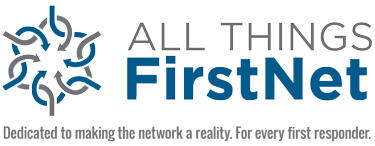By James Careless
In communications parlance, ‘5×5’ refers to radio signals that are perfectly clear and perfectly intelligible. In conference parlance, 5×5 is the short name of the Public Safety Innovation Summit. It is conducted annually by the National Institute of Standards and Technology’s Public Safety Communications Research — part of NIST’s Communications Technology Laboratory that conducts research, development, testing, and evaluation regarding public safety communications technologies — and the FirstNet Authority.
This year’s 5×5 Summit was held in Chicago June 25-27, at the Fairmont Chicago Millennium Park hotel. The event brought together leaders in public safety, academia, government, and industry to design the future of first responder communications, try out the latest innovations in public safety communications technology — there were 70+ live tech demos during 5×5 — and learn how first responder comms tech is being used in the field today.
Bruce Moeller is a regular 5×5 attendee, who spoke with AllThingsFirstNet.com about his experiences at the 2024 5×5 Summit. He is a retired fire chief and city/county manager, and currently an adjunct assistant professor in disaster and emergency management at Nova Southeastern University in Florida.
“From my viewpoint, 5×5 is probably one of the best gatherings that I have had the opportunity to go to,” Moeller told AllThingsFirstNet.com. “It involves predominantly a combination of academics and major companies that are developing emerging technologies related to the public safety space. It’s not salespeople: These are the engineers that are doing the work. There also is a healthy number of current and retired public safety professionals that engage in this collaborative back-and-forth, to explore the new technologies being developed by those companies and academics, and to provide feedback on the concepts. The things that you see at 5×5 are not yet available on the marketplace, but ideally will be within a year or two through this process.”
With a lead like this, one has to wonder what Bruce Moeller saw at this year’s 5×5 that impressed and excited him. “Man, there were a bunch,” he replied. “There were a lot of sessions on drones, particularly autonomous drones. They have the ability to increase and expand situational awareness for public safety agencies, such as the use of multiple drones over wildfires. Drones can be very useful for identifying our personnel on the fire ground, or indeed in any major tactical undertaking, to understand where they are within the scene itself. 5×5 also talked about the work being done to improve real-time tracking of personnel with buildings. There were some really fascinating pieces on that.”
Moeller was also impressed by presentations related to FirstNet’s exclusive use of Band 14 for public safety. Band 14 frequency is the only LTE band in the U.S. where first responder use of High-Powered User Equipment (HPUE) is allowed. “Compared to conventional cell phones, vehicles equipped with HPUE cellular transceivers can legally generate two to three times more power when transmitting in Band 14,” said Moeller, “which means that HPUE significantly expands your access to cellular networks. So, in more rural areas or even in wilderness areas, you now have a greater capacity to stay connected to support the essential data needs that you have. Again, you have to be on Band 14 for that, going through FirstNet and AT&T.”
As for the coolest thing that caught his attention? “It was the use of lidar (light detection and ranging) to map the interior of a building,” Moeller replied. “The presenter had a lidar unit that was about the size of a carryon suitcase, and a big pole sticking up from it with a bunch of lidar sensors on it. Two days before the conference, they mapped three-four floors of this hotel on Michigan Avenue in Chicago, and they walked into every single room, bathroom, closet — it didn’t make a difference. The next day they put it into a computer and the system took a day to generate a very realistic 3D image of those floors of the hotel, every room, the major furniture pieces that were in them; everything. This represents one possible approach to obtaining very real and very meaningful three-dimensional models of significant structures such as schools and hospitals.”
All told, Bruce Moeller learned a lot by attending the 2024 5×5 Summit, and he recommends that FirstNet users nationwide should consider attending next year’s conference. “I think that those who are responsible for public safety communications, including FirstNet police, fire, and EMS agencies should attend 5×5 to see what the emerging technologies are and what they can expect from them,” said Moeller. “Coming to 5×5 allows those agencies, before they start making decisions about the next newest thing on the market, to understand what the first responder communications industry is headed to in the next two to three years, and to have their say about in that direction before new tech is finalized.”



Be the first to comment on "The 5×5 Public Safety Summit: What It Was, Why It Matters"